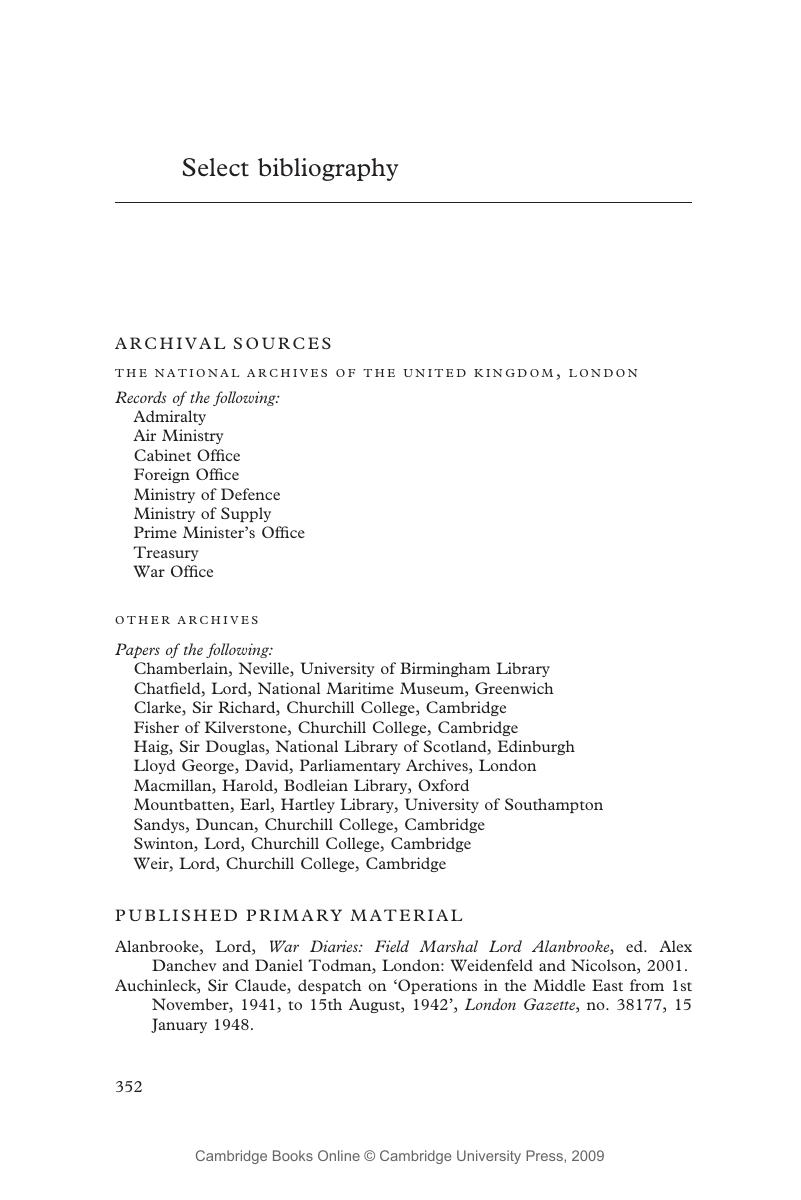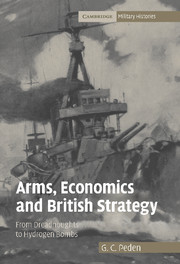Book contents
- Frontmatter
- Contents
- List of tables
- Acknowledgements
- List of abbreviations
- Introduction
- 1 The dreadnought era, 1904–1914
- 2 The First World War
- 3 Retrenchment and rearmament, 1919–1939
- 4 The Second World War
- 5 The impacts of the atomic bomb and the Cold War, 1945–1954
- 6 The hydrogen bomb, the economy and decolonisation, 1954–1969
- Conclusion
- Select bibliography
- Index
- References
Select bibliography
Published online by Cambridge University Press: 16 July 2009
- Frontmatter
- Contents
- List of tables
- Acknowledgements
- List of abbreviations
- Introduction
- 1 The dreadnought era, 1904–1914
- 2 The First World War
- 3 Retrenchment and rearmament, 1919–1939
- 4 The Second World War
- 5 The impacts of the atomic bomb and the Cold War, 1945–1954
- 6 The hydrogen bomb, the economy and decolonisation, 1954–1969
- Conclusion
- Select bibliography
- Index
- References
Summary

- Type
- Chapter
- Information
- Arms, Economics and British StrategyFrom Dreadnoughts to Hydrogen Bombs, pp. 352 - 366Publisher: Cambridge University PressPrint publication year: 2007



